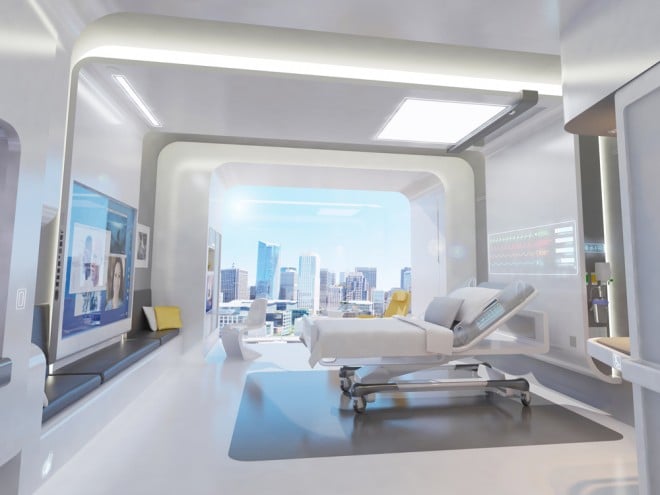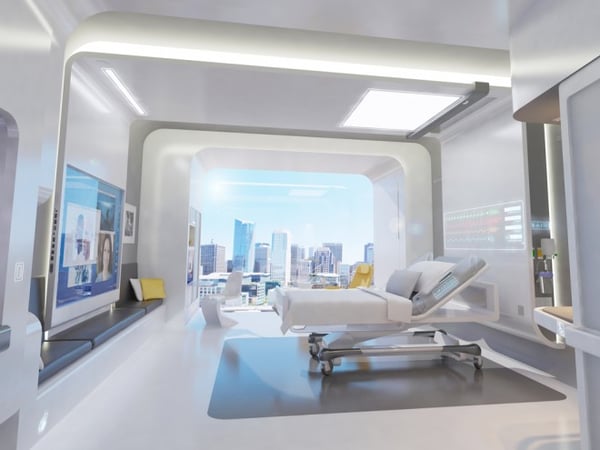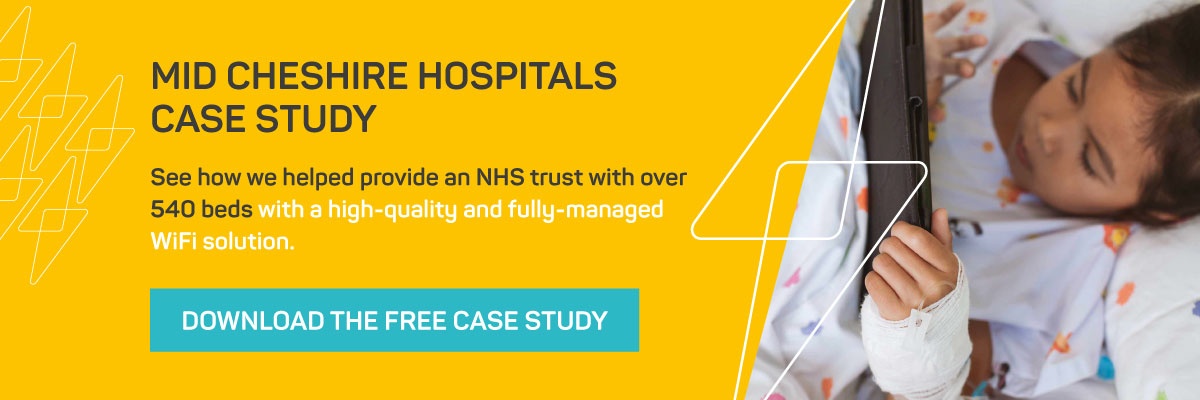The Hospitals of the Future: What Will Patients Expect?
5 minute read | 18/05/2018

When patients walk into hospitals of the future, they may expect futuristic technology, such as robot medical staff, 3D projections and floor-to-ceiling touch screen panels. As technology evolves, so do people’s needs. Here’s how hospitals will evolve alongside patient expectations.
Minimal architecture with thoughtful interactive details
Over the past 20 years, hospitals have been taking design cues from hotels and opting for welcoming touches such as wood accents and pastel or bright colour schemes to help patients feel more at home. As life becomes more cacophonous, many people turn to a more minimalistic aesthetic as a contrast.
So for hospitals, think curved white panels, backlit displays and brushed aluminium accents - reminiscent of an iPhone.
Interactive features, such as sensors and displays integrated into furniture, will make it easier for doctors and nurses to access critical data easily and quickly, instead of being confined to tiny monitors and printed sheets. For example, Patient Room 2020 was created by, non-profit design company, NXT Health as an example of a hospital of the future.
The life-size prototype had useful features such as sinks lighting up to remind caregivers to wash their hands before tending to patients and patient dinner tables that flipped over to reveal touch screen tablets that allowed them to control the lights, call for help or play games.
Futuristic features like the ones of Patient Room 2020 are all meant to optimise quality of care and improve the overall patient experience.
Machine learning and Artificial Intelligence
Technological advancements have brought innovations such as artificial intelligence (AI) into play. AI will replace traditional monitors, because they don’t just monitor patient health status but also help prevent patient emergencies before they occur by analysing the data for key indicators.
They can also automatically bring up all of the relevant data on the patient, such as files on their health condition, without doctors and nurses needing to manually search for it.
This automated process means healthcare professionals can spend more time treating and providing care, and less time locating and documenting data.
And it’s not just for the staff. Patients are expecting their overall hospital experience to be as smooth, efficient and stress-free as possible - just like how things increasingly are at home. Features such as AI facilitate that by helping doctors and nurses access all the information they need so they can treat patients more efficiently and quickly.
The digital patient experience
Professor Stefaan Bergé, Head of the Oral and Maxillofacial Department at Radboud University Medical Centre Nijmegen, in the Netherlands, redesigned his department’s rooms based on patient suggestions. The main suggestions from patients were: to have more privacy, more information and more games to help kill time in the waiting rooms - especially for children.
This is why more and more hospitals are offering more than just WiFi. They are beginning to implement engagement portals for patients and visitors.
Patient engagement portals
The internet of things (IoT) has transformed the way we live and work. People are already accustomed to everyday items and processes being performed using an internet connection. And this is extending into healthcare.
Patients and visitors want to be able to access every piece of information they might need about the hospital within a metaphorical arm’s reach while medical staff and healthcare bodies want to improve productivity and decrease unnecessary costs.
Hospitals are daunting places to many people, after all. The only familiar thing they have is their mobile phone.
Rather than just offering WiFi, healthcare providers are installing Patient Engagement Portals which patients and visitors are redirected to once joining the WiFi connection. These customised portals (unique to the individual Trust) allow patients to check into their appointments, find out where to go and even order meals - all using their mobile device. This means they don’t need to ask hospital staff for help nor will they need to consult a wall map or leaflet.
Patient Engagement Portals also come loaded with games for children to play while they wait and information about the facilities available at the hospital, such as the gift shop or cafe. This allows patients and visitors to make best use of the facilities available on site.
The Portal can also be used to direct patients and visitors to literature which has traditionally been held on a wall of leaflets.
When people walk into a hospital, they are often intimidated. Hospitals are daunting places to many people, after all. The only familiar thing they have is their mobile phone. Patient engagement portals allow patients to use their phones to access a wealth of resources right at their fingertips, which is very comforting and helps to improve the overall experience.
This is why ultra connectivity will work its way into the heart of a hospital. By allowing access to everything a person may want to know whist there, their patient (or visitor) journey becomes much more seamless and positive. And from the hospital’s side, staff can use the time they would have spent answering patient queries (now handled by the Engagement Portal) on more important tasks.
Find out more about hospitals of the future
As digital technology keeps moving forward, the quality of healthcare will continue to rise. As well as assuming doctors will be able to treat most of our ailments, more of us are also expecting hospitals and clinics to offer cleaner, slicker and more technologically advanced environments. This includes futuristic equipment and ultra connectivity to help make information even more accessible and the patient journey more seamless than ever.
If you’d like to find out more information about bespoke integrated patient solutions and what they can bring to the healthcare service, download a copy of our Healthcare Case Study.
About the author
Rebecca O'Donovan
Becky is the Marketing Director at SPARK TSL, of whom she has worked for since 2012. She is responsible for high-level marketing strategy focusing on lead generation and aiding the vision of the business to ensure business growth.
More articles by the author
Related articles
.jpg?width=386&height=180&name=Blog%20feature%20image%20(1).jpg) Healthcare Industry
Healthcare Industry
5 Benefits of Patient Education Systems for Hospitals
 Healthcare Industry
Healthcare Industry
Efficient Hospital Patient Engagement Systems Help Everyone
Medical and admin staff have to balance huge workloads. From organising medical records to checking patients ...
.jpeg?quality=low&width=386&height=180&name=AdobeStock_145698199-min-1-min%20(1).jpeg) Healthcare Industry
Healthcare Industry
How Important Are Hospital Patient Entertainment Systems? | SPARK TSL
New, innovative hospital entertainment systems offer patients and staff more than their legacy predecessors ...



